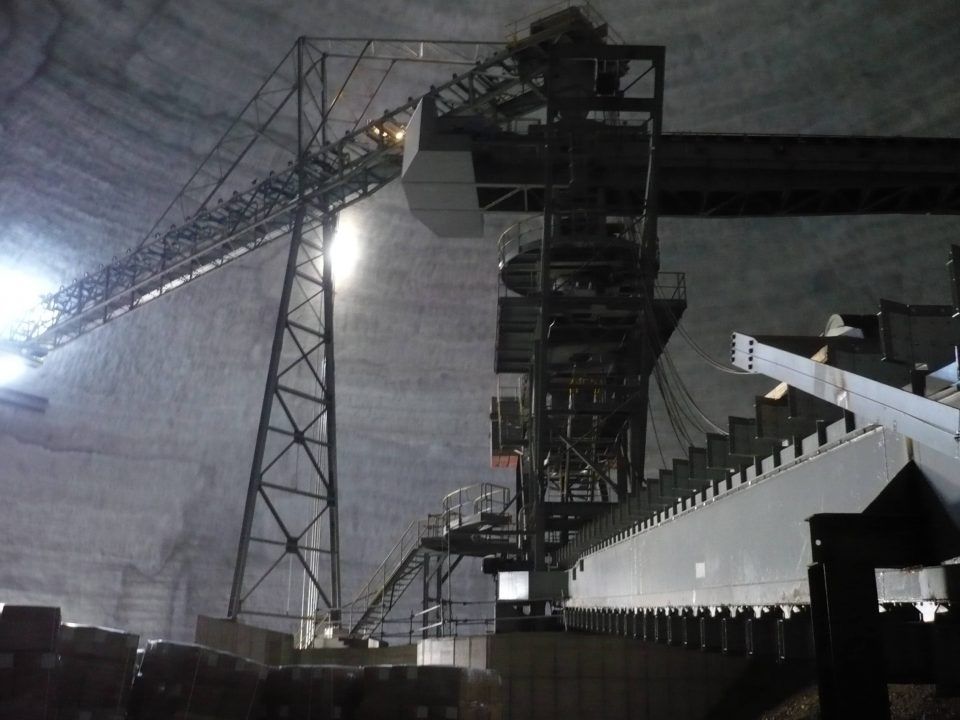The current issue of World Coal featured another Dome Technology article, this time about the full product protection domes provide for coal. Here’s an excerpt:
Coal companies choose domes for one key reason: Seamless domes help companies deal with air and water issues from open coal piles while still providing ample storage. An airform surrounding the entire dome prevents moisture from seeping in and dust from drifting out, and a dome provides substantial storage capacity in a smaller footprint than traditional coal storage solutions.
Based on the ability to build up rather than out, domes store a large volume on a smaller foundation, eating up less property at the site. While some customers require three to five warehouses to store product, one dome will likely accommodate the same amount of material in one structure.
The double curvature of a dome provides strength at all points of the structure, even near the apex. With strength at the top, a coal company has no problem securing adequate space for an ample headhouse where employees can do their work and transfer locations can remain covered. Outside the headhouse but also at the apex, dust-collection systems thwart particulates trying to escape.
The dome shell can also accommodate explosion venting, and Dome Technology pioneered a round hybrid model, in contrast to square and rectangular explosion venting that has been the norm in storing products prone to deflagration. The proprietary round vents are comprised of a metal ring fastened directly to the dome with pressure-release screws; these screws are engineered to remain secure through dead, live and wind loads but will release should interior pressure reach critical levels. To the metal ring is fastened a geodesic steel lattice covered with fabric. The lattice helps the fabric hold its shape, and the fabric acts as a waterproofing shield protecting product and helping maintain the dome’s interior climate.
A vent will always create a weak spot, but the round version has no corners for stress concentration and structural weakness. In the event of an explosion, the vent fabric accepts the load and transfers it uniformly around the ring’s circumference. “Because it’s circular we can predict the load going to each of the fasteners really well,” said Jason South, Dome Technology Vice President of Engineering, Research and Development. “If it were rectangular, the pressure going to each fastener could be different,” and more difficult to estimate.
With a defined amount of required surface area, Dome Technology’s team sizes the explosion vents and places them in locations where they’ll vent adequately and function structurally.
Another way to control interior conditions is by engineering ways to cut off air supply. Dome Technology engineers help companies determine how to seal reclaim hoppers and tunnels as needed — a solution for fire prevention and environmental protection.
Even with all the available bells and whistles, throughput speed is customizable, and if a dome is engineered with multiple tunnels and systems compatible with rail, truck or ship, operations can optimized to meet client demands. The dome can be filled and emptied as quickly as desired with the right systems in place.

Coal reconsidered?
Focusing on biomass has left many energy companies with bigger bills that force them to rely on government subsidies or swollen bills for consumers — not a popular option.
As more companies reconsider coal, and as more countries require coal piles to be covered for environmental reasons, the storage model must be reconsidered. The traditional A-frame is an option, but sprawling storage structures with seams that allow for moisture access aren’t ideal. A reinforced-concrete dome is monolithic, and no seams means ultimate control over interior conditions.